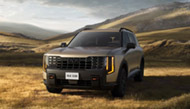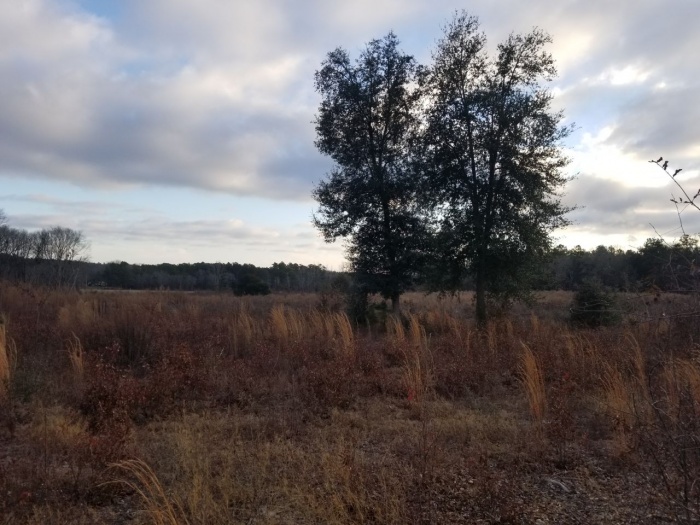▶ TIMOTHY EGAN
The Koch brothers — yes, them — run cattle on a 250,000-acre ranch nearby. Even though the land is theirs, most of the Beaverhead County politicians are not.
The centerpiece of this valley belongs to you and me and a bunch of birds. It’s part of the Red Rock Lakes National Wildlife Refuge, a stunning scrap in the quilt of the nation’s public land, more than 600 million acres from Florida to Alaska. A president who was not much of a birder signed an executive order creating this refuge in 1935. Franklin D. Roosevelt has been repaid. The big-winged white swans, the jumbo jets of the avian world, were facing extinction; now the population is thriving.
The Koch philosophy is that government ownership is bad, and that land, or a health care system for that matter, managed for the public good is doomed to fail. A tangential idea, the tragedy of the commons, holds that individuals seeking their own private gain will ultimately ruin something shared by a community.
It’s a tidy theory, with more than a grain of truth. But it’s laughable when applied to the West. Here are some of the fastest-growing cities in the nation surrounded by much-used and still-vital national forests, national parks, national wildlife refuges and other public lands.
The big story of the West today is how the urban and the wild have produced a unique lifestyle — a new-century ecosystem. Each depends on the other. And the lands, though badly scarred during the last century, are being restored, showing the power of people to mend places they love. This is not to say there aren’t endangered plants and animals, drought-shriveled grasslands, oil-plundered prairies or entire forests killed by a surfeit of beetles in a climate-changed West. But another narrative is more compelling.
From a skyscraper in downtown Seattle, the core of a metro area of 3.7 million people, you can see three national parks — Mount Rainier, Olympic and North Cascades. In the heart of Olympic, the largest dam-removal project in American history has unshackled the Elwha River. Floating down that snow-fed waterway earlier this month, I saw sockeye salmon racing upstream in a big stretch of the river that had been blocked by a dam. Hope is the thing with feathers, Emily Dickinson said. On the Elwha, hope is the red flash of sockeye in a river wild again.
On either side of the spillage of Tucson are the ancient, floppy-armed cactuses of Saguaro National Park. Not far from the gaudy clutter of Las Vegas, where the casino magnate Sheldon Adelson buys Republicans who vow to sell off our public lands, is the Red Rock Canyon National Conservation Area. More than one million people visit the 200,000 acres of Red Rock every year — evidence of a constituency that will defy Adelson’s political acolytes.
The modern West is the most urbanized part of the United States. About 90 percent of Westerners live in areas defined by the census as urban. Utah, where most people live along the Wasatch Mountain Front, is slightly more urban than New York State, with its empty reaches in the north. Ronald Reagan was probably the last of the costume cowboys to fool Easterners into thinking that everyone who lives here is saddle sore. Sure, Cliven Bundy, the deadbeat rancher with the 19th-century racial views, was a hero to the clueless indoorsmen of Fox News. Everyone else was appalled.
The West today is high-tech, young, more optimistic than other regions. And what gives joy, solace, relief and a thrill to the lives of so many Westerners is the one thing they all have in common: public land at their doorstep. There is no other place on earth like it. That is, fast-growing new cities surrounded by a natural world little changed since the founding of the republic.
It’s easy to be cheered by the return of bison to grasslands throughout the West. More surprising is the miracle of Southern California steelhead, a large trout that lives in the ocean and spawns in fresh water. Thanks in part to a public land buffer next to 20 million people, steelhead are getting a new lease on life in one of the most populated areas of the country.
The chaparral forests outside Los Angeles have very little in common with this former stagecoach stop in the lonely mountains of southwest Montana. Except this: A wounded piece of land can be made whole, if managed for the future by people whose capacity for wonder is limitless.
스마터리빙
more [ 건강]
[ 건강]이제 혈관 건강도 챙기자!
[현대해운]우리 눈에 보이지 않기 때문에 혈관 건강을 챙기는 것은 결코 쉽지 않은데요. 여러분은 혈관 건강을 유지하기 위해 어떤 노력을 하시나요?
 [ 건강]
[ 건강]내 몸이 건강해지는 과일궁합
 [ 라이프]
[ 라이프]벌레야 물럿거라! 천연 해충제 만들기
 [ 건강]
[ 건강]혈압 낮추는데 좋은 식품
[현대해운]혈관 건강은 주로 노화가 진행되면서 지켜야 할 문제라고 인식되어 왔습니다. 최근 생활 패턴과 식생활의 변화로 혈관의 노화 진행이 빨라지고
사람·사람들
more많이 본 기사
- 트럼프, 엡스타인 파일 공개법 서명… “민주당에 역풍 불것”
- 아이폰 있으면 국내선 여권 불필요 1
- “트럼프, ‘AI규제 州법 무력화’ 추진…소송·예산지원 중단”
- 美, ‘中의존 탈피’ 위해 사우디와 희토류 공급망 추진
- 새 종전안으로 우크라이나 압박하는 트럼프…전선에선 공방 격화
- 李대통령 “북핵 고도화 방치안돼…실용적·단계적 한반도비핵화”
- 무인도 좌초 여객선 항해사, 휴대전화 딴짓하다가 ‘쾅’
- 샬럿 대대적 불체자 단속에 한인사회 긴장
- “무너진 캘리포니아 재건하겠다” 3
- “의회, 펠로시 주식 논란에 ‘국회 주식거래 금지법’ 본격 논의”
- 메디케이드·식량·주거 보조 이용… 영… 3
- 美, 중동에 엔비디아 최신칩 수출 승인…對韓수출 불확실성↓
- “섬김과 연합으로 선한 영향력 전하는 총연 이끌 것”
- 엔비디아 또 ‘사상최고’ 실적… ‘AI거품’ 논란 일축하고 주가↑
- 트럼프, 조지아 단속에 “난 바보같이… 1
- “소득대비 과도 공제… IRS 감사타겟 될 수도”
- 나경원 등 ‘패스트트랙 충돌’ 오늘 1심 선고…발생 6년7개월만
- 현빈♥손예진, 최초 부부 동반 남녀주연상..트로피 4개 집으로 [청룡영화상]
- 이젠 프리웨이도 달리는 웨이모
- ‘엡스타인파일 공개 법안’ 의회 문턱넘어…트럼프 서명만 남아
- ‘호객 없는 수산시장’… 제철 맞은 방어, 새우 먹으러 울진 간다
- 맥도널드, 연말 인기메뉴 ‘맥립’ 출시
- “미·러 새 종전안, 우크라 영토양보… 1
- AI 확산에 올해 일자리 110만개 사라져
- 브룩필드, 1천억 달러 규모 AI인프라 프로그램 조성…엔비디아 참여
- 한인타운 올림픽·버몬트 총격 사건 1
- 한인은행 수익률… LA 카운티 은행 중위권 그쳐
- 李대통령 이집트 도착…對중동 정책 ‘카이로 구상’ 천명 주목
- 韓 사상 첫 ‘월드컵 포트2’ 확정, 문제는 ‘포트2답지 못한’ 홍명보호 경기력
- “동양인 비하 제스처, 인종차별 맞다… 1
- 손흥민, ‘임신 협박 3억 갈취’ 20대女 재판에 ‘증인 출석’... 50분간 비공개 신문
- 빈살만 극진환대 트럼프…영부인 만찬 … 1
- 푸드스탬프 재신청 의무화 추진 300여만명 식비지원 상실 위기
- 계속되는 민주당의 헛손질
- 사라진 백악관의 이스트 윙
- 실적낸 여성 뉴욕경찰수장, ‘진보’ … 1
- 타일러, ‘스타벅스’ 해프닝 언급→ 마케팅 제안 “내 이름 샌드위치 만들길”[라스]
- 북VA 불법 마사지업소 260곳 넘는다
- 22기 뉴욕평통 출범식⋯“힘찬 출발”
- 의회가 공개 결정한 ‘엡스타인 파일’… 정·재계 새 뇌관 되나
- [미국은 지금] 미국 정치의 파산과 그 댓가
- [경제 트렌드] “거스름 줄 동전이 없어”… 1센트 폐지 혼란
- 현대차그룹 차량들, 충돌평가 ‘최고 등급’
- “美, 韓에 ‘디지털 규제 추진하면 무역법 301조 조사한다’ 경고”
- 오프라인 한국어 과정 성공적 마무리 단계
- 젠슨황과 돈독해진 트럼프, 엔비디아 AI칩을 외교 카드로 활용
- 소비 양극화… 저소득층 패스트푸드도 못가
- 유병홍씨 자전소설 ‘불사조’ 출간
- ‘엡스타인 파일 연루’ 서머스 전 재무, 오픈AI 이사직 사임
- 中, ‘日수산물 수입 중단’ 추가 보복… “다카이치, 中공분 야기”
1/5지식톡

-
 테슬라 자동차 시트커버 장착
0
테슬라 자동차 시트커버 장착
0테슬라 시트커버, 사놓고 아직 못 씌우셨죠?장착이 생각보다 쉽지 않습니다.20년 경력 전문가에게 맡기세요 — 깔끔하고 딱 맞게 장착해드립니다!장착비용:앞좌석: $40뒷좌석: $60앞·뒷좌석 …
-
 식당용 부탄가스
0
식당용 부탄가스
0식당용 부탄가스 홀세일 합니다 로스앤젤레스 다운타운 픽업 가능 안녕 하세요?강아지 & 고양이 모든 애완동물 / 반려동물 식품 & 모든 애완동물/반려동물 관련 제품들 전문적으로 홀세일/취급하는 회사 입니다 100% …
-
 ACSL 국제 컴퓨터 과학 대회, …
0
ACSL 국제 컴퓨터 과학 대회, …
0웹사이트 : www.eduspot.co.kr 카카오톡 상담하기 : https://pf.kakao.com/_BEQWxb블로그 : https://blog.naver.com/eduspotmain안녕하세요, 에듀스팟입니다…
-
 바디프렌드 안마의자 창고 리퍼브 세…
0
바디프렌드 안마의자 창고 리퍼브 세…
0거의 새제품급 리퍼브 안마의자 대방출 한다고 합니다!8월 23일(토)…24일(일) 단 이틀!특가 판매가Famille: $500 ~ $1,000Falcon: $1,500 ~ $2,500픽업 & 배송직접 픽업 가능LA…
-
 바디프렌드 안마의자 창고 리퍼브 세…
0
바디프렌드 안마의자 창고 리퍼브 세…
0거의 새제품급 리퍼브 안마의자 대방출 한다고 합니다!8월 23일(토)…24일(일) 단 이틀!특가 판매가Famille: $500 ~ $1,000Falcon: $1,500 ~ $2,500픽업 & 배송직접 픽업 가능LA…
케이타운 1번가
오피니언
 정숙희 논설위원
정숙희 논설위원사라진 백악관의 이스트 윙
 파리드 자카리아 워싱턴포스트 칼럼니스트 / CNN ‘GPS’ 호스트
파리드 자카리아 워싱턴포스트 칼럼니스트 / CNN ‘GPS’ 호스트 계속되는 민주당의 헛손질
 김동찬 시민참여센터 대표
김동찬 시민참여센터 대표 [미국은 지금] 미국 정치의 파산과 그 댓가
 성영라 수필가 미주문협 부이사장
성영라 수필가 미주문협 부이사장 [수요 에세이] 부석사, 배흘림기둥에 기대어 보다
 서정명 / 서울경제 논설위원
서정명 / 서울경제 논설위원[만화경] ‘국부론’과 “기업이 곧 국력”
 노세희 부국장대우·사회부장
노세희 부국장대우·사회부장 대한은 다시 살아나는가
 민경훈 논설위원
민경훈 논설위원사자와 생쥐, 그리고 인간 이야기
 한형석 사회부 부장대우
한형석 사회부 부장대우 한인타운 교통 인프라 개선 기대
 박영실 시인·수필가
박영실 시인·수필가 [화요칼럼] 말의 위력
1/3지사별 뉴스

22기 뉴욕평통 출범식⋯“힘찬 출발”
22기 민주평화통일자문회의 뉴욕협의회(회장 이시화)는 17일 퀸즈 플러싱 소재 코리아빌리지 디모스 연회장에서 자문위원 173명을 비롯한 한인사…
메디케이드 받으면 영주권 신청 거부된다

VA 주지사 인수인계 ‘삐걱’…UVA 총장 선임 ‘격돌’
버지니아 글렌 영킨(Glenn Youngkin, 공화, 사진 왼쪽) 주지사와 내년 1월 취임하는 아비가일 스팬버거(Abigail Spanber…
북VA 불법 마사지업소 260곳 넘는다

오프라인 한국어 과정 성공적 마무리 단계
샌프란시스코 한국 교육원(허혜정 원장)이 2025년 가을 학기에 처음 개설한 오프라인 한국어 과정 ‘한국어 1’이 오는 22일 성공적인 마무리…
마라나타 비전교회, 장로/안수집사 임직및 장로 은퇴예배

오늘 하루 이 창 열지 않음 닫기 





















































.png)


댓글 안에 당신의 성숙함도 담아 주세요.
'오늘의 한마디'는 기사에 대하여 자신의 생각을 말하고 남의 생각을 들으며 서로 다양한 의견을 나누는 공간입니다. 그러나 간혹 불건전한 내용을 올리시는 분들이 계셔서 건전한 인터넷문화 정착을 위해 아래와 같은 운영원칙을 적용합니다.
자체 모니터링을 통해 아래에 해당하는 내용이 포함된 댓글이 발견되면 예고없이 삭제 조치를 하겠습니다.
불건전한 댓글을 올리거나, 이름에 비속어 및 상대방의 불쾌감을 주는 단어를 사용, 유명인 또는 특정 일반인을 사칭하는 경우 이용에 대한 차단 제재를 받을 수 있습니다. 차단될 경우, 일주일간 댓글을 달수 없게 됩니다.
명예훼손, 개인정보 유출, 욕설 등 법률에 위반되는 댓글은 관계 법령에 의거 민형사상 처벌을 받을 수 있으니 이용에 주의를 부탁드립니다.
Close
x